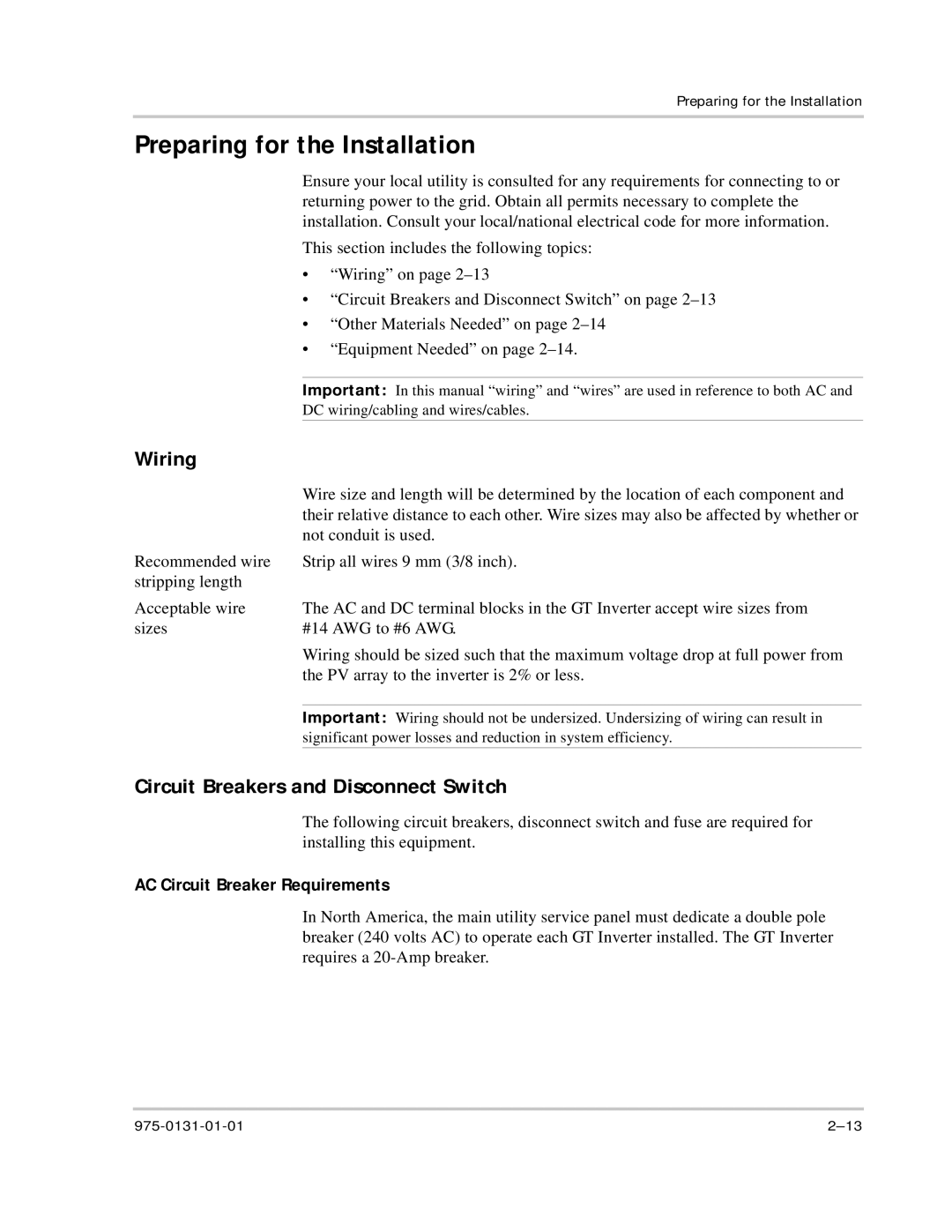
Preparing for the Installation
Preparing for the Installation
| Ensure your local utility is consulted for any requirements for connecting to or |
| returning power to the grid. Obtain all permits necessary to complete the |
| installation. Consult your local/national electrical code for more information. |
| This section includes the following topics: |
| • “Wiring” on page |
| • “Circuit Breakers and Disconnect Switch” on page |
| • “Other Materials Needed” on page |
| • “Equipment Needed” on page |
|
|
| Important: In this manual “wiring” and “wires” are used in reference to both AC and |
| DC wiring/cabling and wires/cables. |
Wiring |
|
| |
| Wire size and length will be determined by the location of each component and |
| their relative distance to each other. Wire sizes may also be affected by whether or |
| not conduit is used. |
Recommended wire | Strip all wires 9 mm (3/8 inch). |
stripping length |
|
Acceptable wire | The AC and DC terminal blocks in the GT Inverter accept wire sizes from |
sizes | #14 AWG to #6 AWG. |
| Wiring should be sized such that the maximum voltage drop at full power from |
| the PV array to the inverter is 2% or less. |
|
|
| Important: Wiring should not be undersized. Undersizing of wiring can result in |
| significant power losses and reduction in system efficiency. |
|
|
Circuit Breakers and Disconnect Switch
The following circuit breakers, disconnect switch and fuse are required for installing this equipment.
AC Circuit Breaker Requirements
In North America, the main utility service panel must dedicate a double pole breaker (240 volts AC) to operate each GT Inverter installed. The GT Inverter requires a
